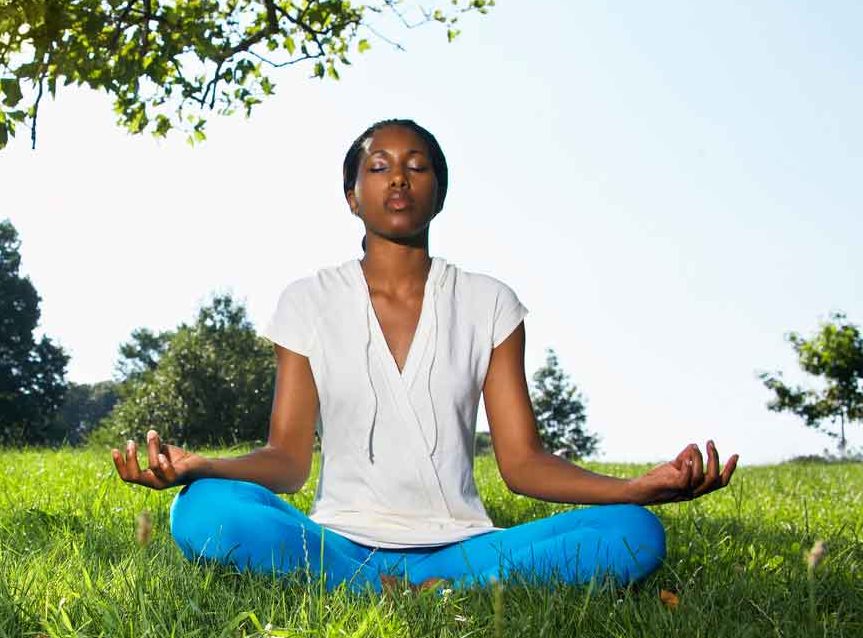Health Benefits of Yoga for Depression

You can use yoga as an escape from the endless rumination that characterizes depression. Learn more about the health benefits of yoga for depression.
You probably know about some health benefits of yoga, such as its ability to alleviate stress. But did you know it can boost emotional health and even ease depression?
In “Yoga for Depression,” Amy Weintraub describes how, for more than a decade, she suffered debilitating seasonal depression during New England’s cold winters. But after taking a yoga class one winter, she felt better — and the effects didn’t stop there.
“The immediate feel-good response encouraged me to practice often,” she says. Within a year of her first class, she was able to stop taking antidepressant medications.
YOU MIGHT ALSO LIKE: Yoga for Seniors
Health benefits of yoga for depression
Yoga offers an escape from the endless rumination that characterizes depression, Weintraub says — one that demands focus and concentration on something outside the self. Now a yoga teacher focused on healing depression, she writes, “Recovery from depression must include the body.”
Science is beginning to explore how using yoga for depression can benefit practitioners like Weintraub. In a preliminary study conducted by Weintraub and a colleague and described in her book, participants in a yoga program reported a 52 percent decrease in feelings of worry and a 43 percent increase in peacefulness after just one class.
Research evidence about benefits of yoga
Although few long-term studies corroborate Weintraub’s experience, one small study of 27 women found significant emotional benefits after eight weeks of a once-a-week yoga class. Those effects lingered measurably at a year’s follow-up, even among women who didn’t continue to practice
For the nine women continued a yoga practice, feelings of depression, rumination, and stress had plummeted far below those of a control group. In another small study, 11 of 17 participants who completed a 20-class series achieved remission from symptoms of major depression.
If you’re interested in the health benefits of yoga for depression, you won’t need to work yourself into a pretzel. There are many different styles of yoga, and you’re likely to find one that suits your personality.
People with depression may benefit from the opportunity to burn off energy offered by power (or vinyasa) yoga, which focuses on a strenuous practice, sometimes conducted in a warm room, that can also be a very good workout.
Others may prefer a gentler pace or more meditative class, such as that found in the Anusara or Kripalu styles. Iyengar, perhaps the most precise and medically oriented of yoga schools, is another excellent option, since teachers tailor classes and poses to individual students’ needs.
Weintraub cautions people with anxiety or bipolar disorder about Kundalini yoga, however. This school uses repetitive motion and stimulating chants to generate energy, practices that could trigger mania. Try another school if you’ve prone to anxiety or have ever had a manic episode.
YOU MIGHT ALSO LIKE: Yoga for Anxiety and Stress
Yoga poses for depression
While any yoga class should include a sequence of poses that are energizing and soothing, certain poses yoga, experts believe and evidence suggests, are helpful for depression.
You can practice them at home in short sessions (be sure to include a few warm-up poses, especially for more strenuous poses like backbends, as well as a cool-down period to finish). Or incorporate them into a class you’re attending; feel free to ask your teacher for assistance.
Either way, you’ll want to keep moving throughout your practice to build confidence and energy. Avoid staying in any one pose for too long, particularly if you’re just getting started.
After even a gentle class, you’ll probably welcome the few minutes of rest that comes with Savasana, the reclining meditation that closes most yoga classes. If you suffer from depression, closing your eyes can be upsetting. Try keeping your eyes open to prevent rumination.
You can also end a session in a supported Reclining Bound Angle Pose (Supta Baddha Konasana), with your heels pressed together and knees splayed and a block or blanket under each knee.
Here are specific poses Weintraub and other experts recommend for recovering from depression:
- To build energy and confidence, try standing poses like Warrior I and Warrior II. Backbends like Wheel or Fish Pose, and Bridge Pose or other inversions such as Shoulderstand or Headstand, also boost mood, playfulness, and energy. One study found backbends were associated with positive mood and decreased fatigue, particularly for people with depression. Work into more advanced poses slowly if you’re just beginning a practice, and with the help of a qualified teacher. You can also modify any inversion or backbend to be gentler or more supportive (ask your teacher, or see the Iyengar yoga website for tips).
- To soothe and restore, try Legs-Up-the-Wall Pose (Viparita Karani). Reclining twists can also be intensely soothing, while chest openers such as Camel and even Mountain Pose (Tadasana) are helpful for counteracting the slumped shoulders and low energy that often accompany depression.
Updated:
August 02, 2023
Reviewed By:
Janet O’Dell, RN